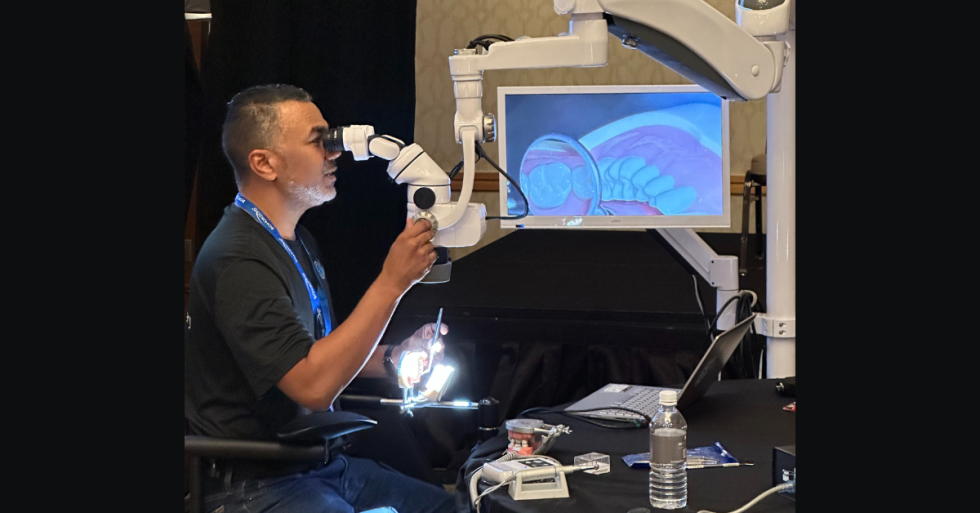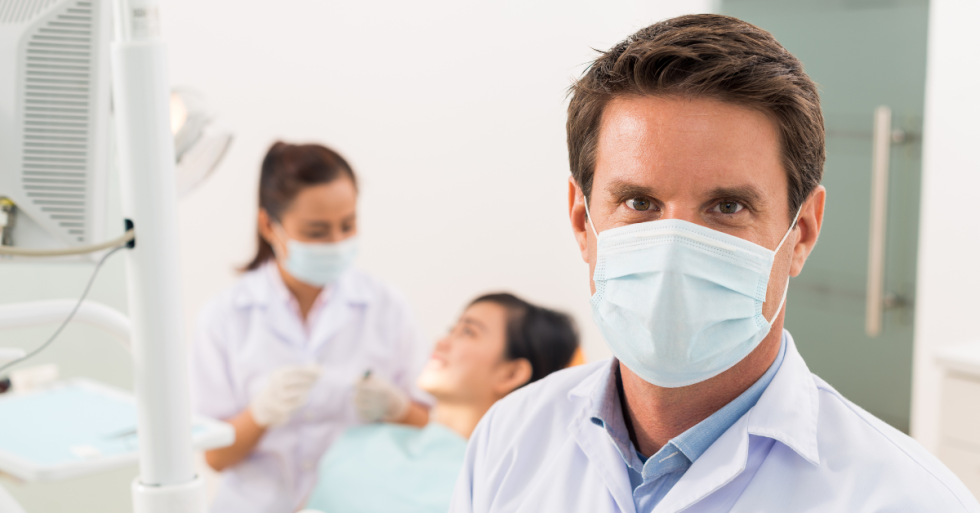Prioritizing Ergonomics: A Game-Changer in Dentistry

This article contains excerpted material from Decisions in Dentistry. Written by Juan Carlos Ortiz Hugues, DDS, CEAS, an Endodontist practicing in Panama. He is a Global microscope user and has recently published “Ergonomics Applied to Dental Practice” published by Quintessence. He lectures globally on ergonomics using a microscope.
No one wants to cut their career short due to injury. Research suggests between 64-93% of dentists & hygienists experience musculoskeletal pain in their professional practice. And, this pain, of course, over prolonged periods over several decades in the dental profession, can turn into serious health and career risks.
It may surprise you to learn for many, these problems often start showing in the last few years of dental school. Cervical, lumbar, wrist, and elbow repetitive movement injuries can hinder the dentist’s performance.
The best approach, of course, is to prevent this pain, because if not addressed in a timely manner these disorders can progress to serious illness — even to the point of permanent disability. Fortunately, these painful and potentially debilitating work-related injuries can be prevented. The key is to:
- Address and optimize the body’s biomechanics during daily tasks
- Use a teamwork approach with the appropriate technology
- Employ basic organizational techniques to minimize risk factors in clinical practice
Common Dental Ergonomic Challenges
- Neck and Back Strain: Consistently leaning over patients can lead to persistent neck and back discomfort.
- Eye Strain: Struggling to get a clear view of the treatment area can result in eye fatigue.
- Repetitive Strain Injuries (RSI): Continuous use of certain tools without proper breaks can cause RSIs.
7 Key Points for Dentists Applying Ergonomics in Practice
Adopting ergonomic equipment and working posture — as well as ensuring a carefully organized operatory layout — can help oral health professionals avoid MSDs that could potentially compromise career longevity. Toward that goal, the following list sums up seven key points to consider:
- Our bodies aren’t naturally built for long sitting sessions.
- Dental work needs good eyesight, which can mess with posture. So, tools with better magnification and the right lighting can help.
- A well-set-up workspace makes ergonomic practice way easier.
- For the dental team, regular stretch breaks are key to keeping everyone’s mind and body in top shape.
- Dental schools should be all over teaching students about operating microscopes and the ins and outs of ergonomic seating.
- Train a dental assistant well, and you’ll see smoother operations and better patient care.
- Getting the dentist, patient, and assistant in just the right spots means better movement and care during procedures.
Solutions in Ergonomic Design
So how else can you prevent the pain? There are several technologies available today designed specifically to support healthy ergonomics for dentists. Check out a few of them below:
- Dental Chairs and Stools: Ergonomic dental chairs and stools are now designed with both the patient’s and dentist’s comfort in mind. Proper lumbar support and adjustability are key.
- Instrument Design: Modern dental tools are crafted to fit comfortably in hand, minimizing the strain.
- Dental Lights: These ensure optimal visibility without causing eye strain.
- Magnification Tools: Devices like dental loupes or microscopes provide clear views of the treatment area without needing to hunch over to get a closer look. These tools allow practitioners to maintain a comfortable posture. Dental microscopes go step further by providing coaxial illumination, allowing a full range of magnification while maintaining an upfront, ergonomic position.
Practicing Four-Handed Dentistry
Four-handed dentistry is a dental practice model where the dentist works closely with a dental assistant to perform procedures in a more efficient and ergonomic manner. This approach optimizes productivity, enhances the quality of patient care, and reduces fatigue and stress for the dental team.
In four-handed dentistry, tasks are divided in such a way that the dentist can focus primarily on the procedure itself, while the assistant takes on the role of ‘extra hands,’ aiding in tasks such as instrument exchange, suction, and retraction.
Looking for More? Reach Out!
As a US-based manufacturer of dental microscopes sold worldwide, we know a thing or two about magnification & ergonomics. If you’re considering adding a microscope to your practice or you just want to learn more about utilizing a dental microscope, we are here to help! Please feel free to reach out at 800-861-3585 or by clicking the button below.



